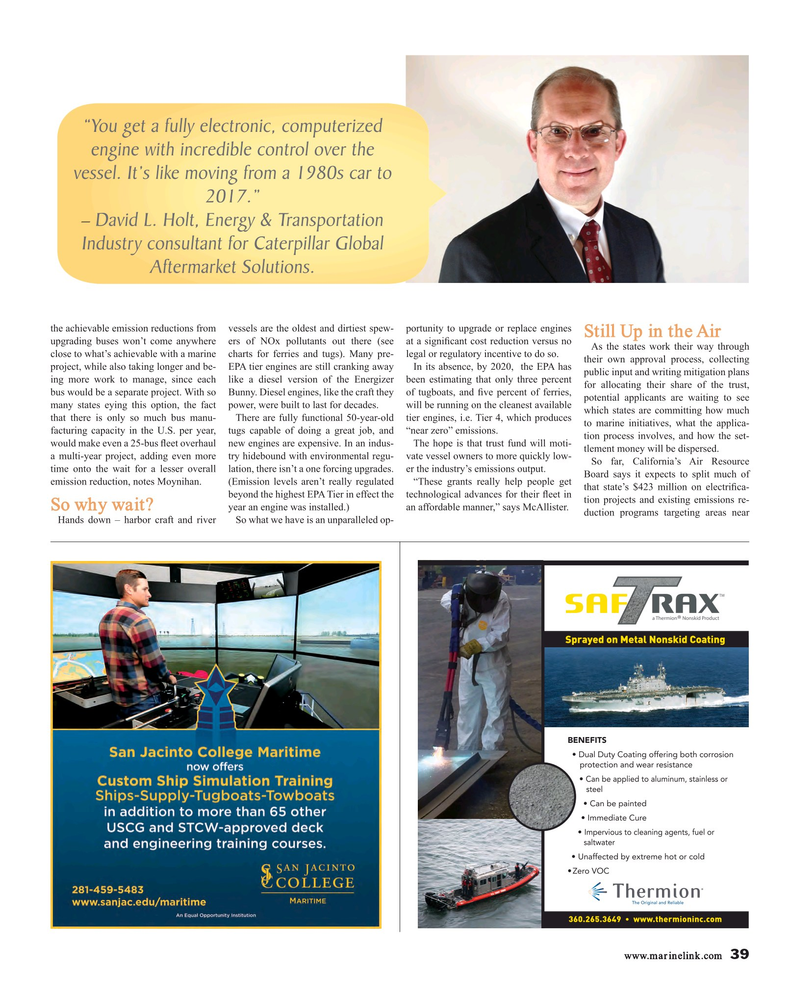
Page 39: of Maritime Reporter Magazine (March 2018)
Annual World Yearbook
Read this page in Pdf, Flash or Html5 edition of March 2018 Maritime Reporter Magazine
“You get a fully electronic, computerized engine with incredible control over the vessel. It’s like moving from a 1980s car to 2017.” – David L. Holt, Energy & Transportation
Industry consultant for Caterpillar Global
Aftermarket Solutions. the achievable emission reductions from vessels are the oldest and dirtiest spew- portunity to upgrade or replace engines
Still Up in the Air upgrading buses won’t come anywhere ers of NOx pollutants out there (see at a signi? cant cost reduction versus no
As the states work their way through close to what’s achievable with a marine charts for ferries and tugs). Many pre- legal or regulatory incentive to do so. their own approval process, collecting project, while also taking longer and be- EPA tier engines are still cranking away In its absence, by 2020, the EPA has public input and writing mitigation plans ing more work to manage, since each like a diesel version of the Energizer been estimating that only three percent for allocating their share of the trust, bus would be a separate project. With so Bunny. Diesel engines, like the craft they of tugboats, and ? ve percent of ferries, potential applicants are waiting to see many states eying this option, the fact power, were built to last for decades. will be running on the cleanest available which states are committing how much that there is only so much bus manu- There are fully functional 50-year-old tier engines, i.e. Tier 4, which produces to marine initiatives, what the applica- facturing capacity in the U.S. per year, tugs capable of doing a great job, and “near zero” emissions. tion process involves, and how the set- would make even a 25-bus ? eet overhaul new engines are expensive. In an indus- The hope is that trust fund will moti- tlement money will be dispersed. a multi-year project, adding even more try hidebound with environmental regu- vate vessel owners to more quickly low-
So far, California’s Air Resource time onto the wait for a lesser overall lation, there isn’t a one forcing upgrades. er the industry’s emissions output.
Board says it expects to split much of emission reduction, notes Moynihan. (Emission levels aren’t really regulated “These grants really help people get that state’s $423 million on electri? ca- beyond the highest EPA Tier in effect the technological advances for their ? eet in tion projects and existing emissions re-
So why wait? year an engine was installed.) an affordable manner,” says McAllister.
duction programs targeting areas near
Hands down – harbor craft and river So what we have is an unparalleled op- www.marinelink.com 39
MR #3 (34-41).indd 39 MR #3 (34-41).indd 39 3/5/2018 2:19:26 PM3/5/2018 2:19:26 PM

 38
38

 40
40
